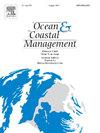昆士兰州一半的沿海水产养殖场靠近滨鸟栖息地
IF 5.4
2区 环境科学与生态学
Q1 OCEANOGRAPHY
引用次数: 0
摘要
水产养殖现在是全球海产品的主要来源。陆地沿海水产养殖通常位于敏感生境附近,如潮滩和湿地,这对包括候鸟在内的许多物种都至关重要。然而,滨鸟栖息地和水产养殖池塘之间的重叠往往没有得到很好的映射,妨碍了有效的管理。在此,我们评估了澳大利亚昆士兰州滨鸟与陆地沿海水产养殖(现在和未来)之间潜在的相互作用。昆士兰州的水产养殖业不断发展,重点是高价值的沿海物种,如虎对虾。我们发现活跃养殖场与滨鸟之间的相互作用潜力很大,14.5%的活跃养殖场直接重叠于滨鸟区(已绘制的滨鸟栖息地),50%在5公里范围内。浮石通道和伯内特河河口滨鸟区附近活跃的水产养殖场需要特别的管理考虑,因为这些地点的滨鸟数量很高(许多在国际和国内具有重要意义),而且它们靠近活跃的水产养殖场。此外,我们发现,一颗追踪到极度濒危的远东杓鹬的卫星可能访问了一个活跃的水产养殖场,这强调了进一步实地评估和有效管理的必要性。几乎所有确定用于未来水产养殖扩展的水产养殖开发区(8个中的7个)与滨鸟区重叠或在5公里范围内,还有15%的非活动场地(批准的没有池塘的场地),这表明需要仔细规划和管理未来水产养殖场地的发展。鉴于这些结果,我们敦促政策制定者和行业领导者确保昆士兰州当前和未来的水产养殖生产可持续共存,并与生物多样性保护和滨鸟保护协议保持一致。本文章由计算机程序翻译,如有差异,请以英文原文为准。
Half of coastal aquaculture sites in Queensland are in close proximity to shorebird habitats
Aquaculture is now the primary source of seafood globally. Terrestrial coastal aquaculture is often located near sensitive habitats such as tidal flats and wetlands, which are crucial for many species including migratory shorebirds. However, the overlap between shorebird habitat and aquaculture ponds is often poorly mapped, hampering effective management. Here we assess the potential interaction between shorebirds and terrestrial coastal aquaculture (present and future) in Queensland, Australia. Queensland has a growing aquaculture industry, focusing on high-value coastal species such as tiger prawns. We found high potential for interaction between active aquaculture sites and shorebirds, with 14.5% of active sites directly overlapping Shorebird Areas (mapped shorebird habitat) and 50% within 5 km. Active aquaculture sites near Pumicestone Passage and Burnett River Estuary Shorebird Areas require special management consideration due to the high counts of shorebirds at these sites (many at internationally and nationally significant levels) and their close proximity to active aquaculture sites. In addition, we found that a satellite tracked critically endangered Far Eastern Curlew likely visited an active aquaculture site, underscoring the need for further on-the-ground assessment and effective management. Nearly all (7 of 8) aquaculture development areas identified for future aquaculture expansion overlapped or were within 5 km of a Shorebird Area, along with 15% of inactive sites (approved sites without ponds), signifying the need to plan and manage development of future aquaculture sites carefully. In light of these results, we urge policy makers and industry leaders to ensure that current and future aquaculture production in Queensland co-exists sustainably and aligns with biodiversity conservation and shorebird protection agreements.
求助全文
通过发布文献求助,成功后即可免费获取论文全文。
去求助
来源期刊

Ocean & Coastal Management
环境科学-海洋学
CiteScore
8.50
自引率
15.20%
发文量
321
审稿时长
60 days
期刊介绍:
Ocean & Coastal Management is the leading international journal dedicated to the study of all aspects of ocean and coastal management from the global to local levels.
We publish rigorously peer-reviewed manuscripts from all disciplines, and inter-/trans-disciplinary and co-designed research, but all submissions must make clear the relevance to management and/or governance issues relevant to the sustainable development and conservation of oceans and coasts.
Comparative studies (from sub-national to trans-national cases, and other management / policy arenas) are encouraged, as are studies that critically assess current management practices and governance approaches. Submissions involving robust analysis, development of theory, and improvement of management practice are especially welcome.
 求助内容:
求助内容: 应助结果提醒方式:
应助结果提醒方式:


